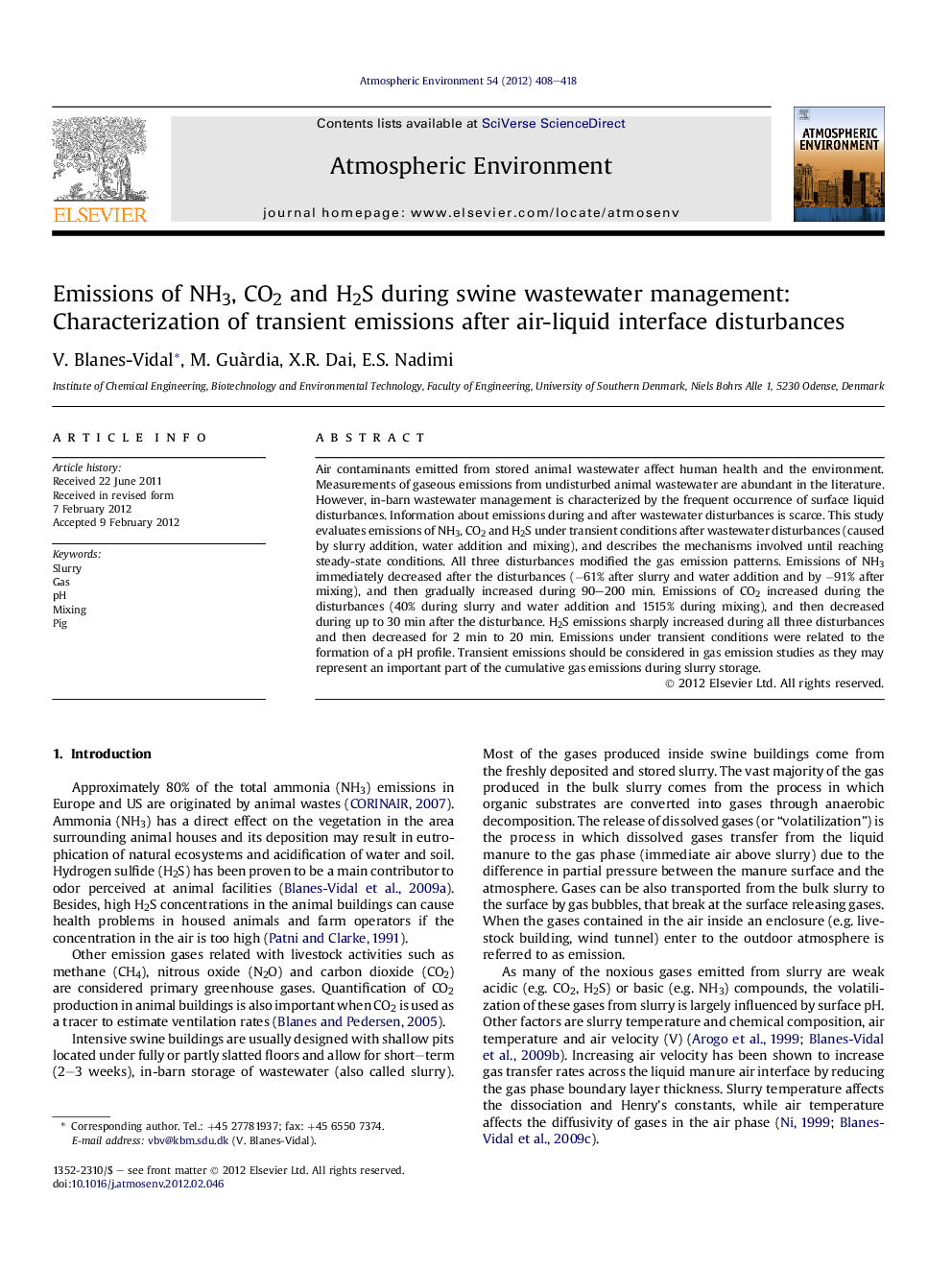| Article ID | Journal | Published Year | Pages | File Type |
|---|---|---|---|---|
| 4438812 | Atmospheric Environment | 2012 | 11 Pages |
Air contaminants emitted from stored animal wastewater affect human health and the environment. Measurements of gaseous emissions from undisturbed animal wastewater are abundant in the literature. However, in-barn wastewater management is characterized by the frequent occurrence of surface liquid disturbances. Information about emissions during and after wastewater disturbances is scarce. This study evaluates emissions of NH3, CO2 and H2S under transient conditions after wastewater disturbances (caused by slurry addition, water addition and mixing), and describes the mechanisms involved until reaching steady-state conditions. All three disturbances modified the gas emission patterns. Emissions of NH3 immediately decreased after the disturbances (−61% after slurry and water addition and by −91% after mixing), and then gradually increased during 90–200 min. Emissions of CO2 increased during the disturbances (40% during slurry and water addition and 1515% during mixing), and then decreased during up to 30 min after the disturbance. H2S emissions sharply increased during all three disturbances and then decreased for 2 min to 20 min. Emissions under transient conditions were related to the formation of a pH profile. Transient emissions should be considered in gas emission studies as they may represent an important part of the cumulative gas emissions during slurry storage.
► Animal slurry in farms is frequently disturbed. ► Ammonia emissions immediately after disturbances are minimum. ► Then ammonia emissions increase until they reach a steady condition. ► Carbon dioxide and hydrogen sulfide emissions are very high during disturbances. ► Emissions under transient conditions are an important part of the total storage time.
